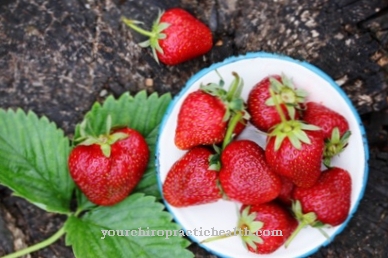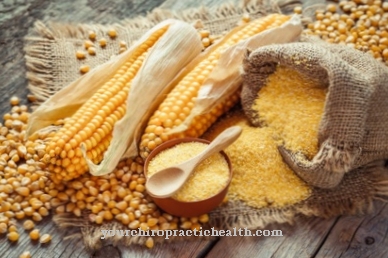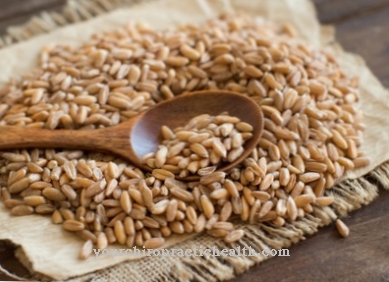The Turnip is an ancient vegetable known by many names and many types. The value of beet tubers was misunderstood for a long time. Today the old vegetables are being rediscovered and are also experiencing a renaissance in upscale restaurants and are once again smuggling into the pots of star chefs.
Navettes, Teltower turnips, or Autumn turnips are just a few of the beet types that are making a career again, because in post-war times they were mainly a "poor people's meal" or were used as fodder.
What you should know about turnips

The oldest European seed finds of the turnip come from Stone Age settlements in the foothills of the Alps.
As an old cultivated plant, the turnip was already known to the Greeks in ancient Rome and was an important cultivation plant there; in ancient Greece it was even considered a staple food for a long time. As early as 35-65 AD, the Roman agricultural author Columella described the cultivation and preservation of turnips. He described the preservation by lactic acid fermentation so precisely that this "turnip herb" is still valued today. For the preservation process, the beets are sliced, then alternately layered in a stone pot with salt and pounded firmly until after a few weeks, similar to sauerkraut. the fermentation process is complete. The schnapps made from turnips, the "Krautinger", is known and loved in Tyrol to this day.
Turnip has already been mentioned in the herbal books of the Renaissance and the Middle Ages. Historical archives also show that the turnip was cultivated in India and China in pre-Christian times.
In Europe the turnip was a staple food until it was supplanted by the potato. In the 19th century it disappeared completely from the menu and was only used when other foods were in short supply. In Bavaria she was around 1900 as Bavarian turnip spread. The oldest recipe from 1691 can be found in the Nuremberg cookbook. The most important dish in Lent was “Bavarian beet dip”, a kind of soup with brown stoving.
The smaller varieties in particular have enjoyed great popularity since the rediscovery of old vegetable varieties. These include the May beet, the Teltower turnip, the Pfatterer turnip, the Gatower ball, the autumn turnip and the Bavarian turnip. These turnip species belong to the cabbage family of the turnip species. The turnip is a very old cultivated plant which is believed to originate in western Pakistan, eastern Afghanistan and the Mediterranean region.
Today it is grown in moderate climates and also at tropical altitudes. Depending on the variety, the turnip can be harvested after 50 or 100 days. Since it has a short development time, it can be grown as a pre-culture in spring or as a post-culture in autumn. So there is harvest from summer to spring, at least half of the year, when the turnip can also be found on market stalls.
In terms of taste, it is similar to that of mild radishes or that of radishes. The mustard oils, which beets contain like all types of cabbage, are responsible for the sweet, piquant taste.
Importance to health
The leaves, as well as the turnip itself, contain all the nutrients that are important for energy metabolism. It also contains a lot of folic acid, which is very important for the good development of the child during pregnancy and for the formation of new cells. Its iron content stimulates blood formation and its zinc deposits ensure strong nails, beautiful hair and healthy skin.
As early as the 1st century AD, the Greek doctor Dioscurides wrote: “The boiled root of the white turnip is nutritious, causes flatulence and stimulates love. If the sprouts are boiled and eaten, they have a diuretic effect. "
Today's scientists describe that the ingredients and fiber, especially the phytochemicals, glucosinolates, of the turnips can protect against rectal and colon cancer. It is also ensured that their consumption has a relaxing, diuretic and invigorating effect.
Ingredients & nutritional values
| Nutritional information | Amount per 100 gram |
| Calories 28 | Fat content 0.1 g |
| cholesterol 0 mg | sodium 67 mg |
| potassium 191 mg | carbohydrates 6 g |
| Fiber 1.8 g | protein 0.9 g |
Turnips and their equally edible leaves contain potassium, calcium, iron and phosphorus, as well as vitamins C, B1, B2, B6 and provitamin A. The leaves in particular contain high levels of vitamin C, folic acid and beta-carotene.
Turnips belong to the cruciferous family and are therefore related to radish, cabbage and mustard and, like these, contain mustard oil glycosides, which give vegetables a subtle spiciness and are known to inhibit cancer development and fight bacteria. Turnips have a water content of around 90% and only 35 calories per 100 grams - so they are ideal for a low-calorie diet.
Intolerances & allergies
Since turnips belong to the cruciferous family, they can be present in humans Allergies to early bloomers such as birch and alder, trigger cross-reactions. This is because similar structures can be found within the Brassica genus, and all turnips also belong to this genus. If these vegetables are cooked too long, the sulfur they contain can cause quite a bit of gas and gas.
Shopping & kitchen tips
Young turnips should be preferred when shopping. An undamaged, firm and smooth shell indicates good quality. They should also feel quite compact, because if they appear too light and give in to pressure, it is a sign that the cell structure inside may already be woody. Older turnips also show slight wrinkles and longitudinal grooves.
The beets are best eaten fresh. But they can also be stored unwashed in the refrigerator for up to a week; the green must be separated beforehand so that they do not dry out. Covered with a damp cloth, they will stay fresh for two weeks. The greens can be left in the refrigerator for a few days in a perforated plastic bag and then cooked like spinach. The beets should be blanched for freezing, then they will keep for six to eight months.
An almost forgotten storage facility is the sand rent - an old classic winter residence for root vegetables. The fresh turnips are buried without the green, in a box with damp sand. But they are not allowed to touch each other.
In this way, they can be kept for up to five months and neither lose their nutrients nor their taste. Before storing, whether in the sand or in the refrigerator, turnips should not be washed under any circumstances; this would damage their outer cell layer and they quickly become soft, wrinkled or rotten.
Preparation tips
Turnips can be prepared in a variety of ways, raw or cooked. Peeled, cut into slices or strips, they are steamed, boiled or fried and are then, for example, a delicious side dish to fish. Finely grated, they are served as a salad with herbs and fine oils. They are well-known and popular as an ingredient in soups or stews.
A soup made only from turnips, refined with a little cream and curry, or a tender beet puree is worth trying. They are recommended as an accompaniment to roasts, pork or lamb chops as well as to roast duck or bratwurst. Cut to a fine carpaccio, the turnip is a real culinary delight.



























